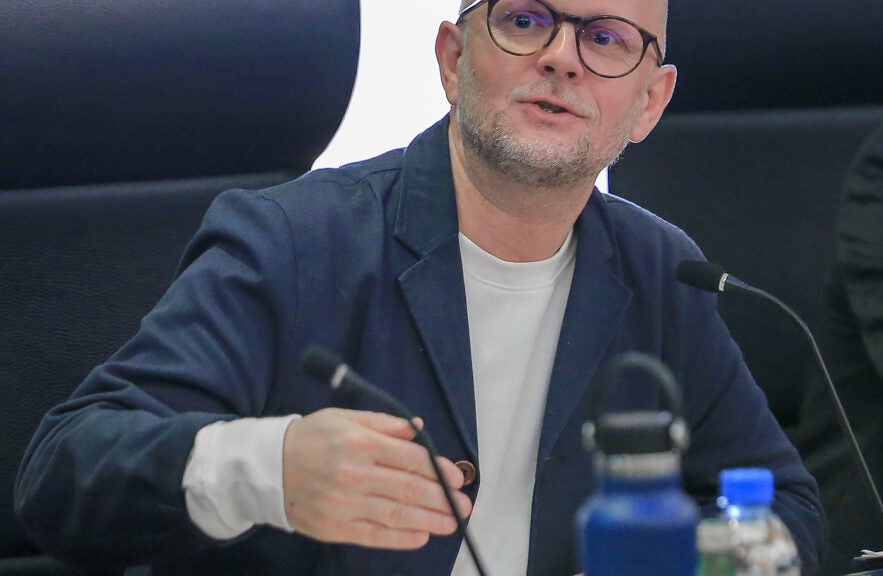The Qatar World Cup 2022 Stadiums Are Built, But Will Pandemic-Era Fans Still Come?

When constructing new sports stadiums, there has long been a mantra that “if you build it, they will come.” In essence, this means that crowds will instinctively be drawn to a new venue to experience the gleaming facilities and the great sport staged inside it. But in a turbulent, complicated world, can the Qatari World Cup organizers assume that this will be the case in 2022? Given the near $6 billion that Qatar has spent on constructing stadiums, this is a critical question.
Ongoing diplomatic issues with near neighbors such as Saudi Arabia, the United Arab Emirates (UAE), and Egypt are a problem for Qatar. Saudi Arabia is a regional football powerhouse and matches there often attract large crowds of fans, many of whom would normally be likely to travel across Qatar’s only land border to watch matches. Egypt too is known for its large, passionate football fan base, and it remains to be seen how many of them will feel inclined to travel across the Middle East to their small neighbor.
The UAE, notably Dubai, is especially important in such matters. Before a blockade of Qatar was imposed in 2017, Dubai (boasting the world’s biggest airport) was an important transit point for football fans traveling across the world. This route of entry into Qatar is currently unavailable; indeed, right now, there is effectively only one way in and one way out of Doha—through Hamad International Airport by Qatar Airways.
This year, with the global airline industry struck down by the effects of COVID-19, the Qatari government has already bailed out its national airline with subsidies amounting to billions of dollars. The ultimate success of the 2022 World Cup and its legacies are more closely intertwined with the long-term health of Qatar Airways than many football fans might realize.
Yet it is the pandemic itself that poses the biggest threat to any Qatari mantra that might assert “if you build it, they will come.” The sporting world has already seen events being canceled, and others being rescheduled—most notably, the 2020 Olympic and Paralympic Games in Tokyo. Late staging of the 2022 World Cup does provide some breathing space for Qatar and FIFA, but, as we are now seeing, there have been several false dawns across the world of sport.
Event organizers across the world have generally demonstrated concern and a high regard for the health and safety of both fans and participants. One reason for this is that many of them are fearful that they will be accused of spreading the virus. Atalanta’s UEFA Champions League game against Valencia earlier this year has become notorious for this reason, inflicting not inconsiderable reputational damage upon the decision makers involved.
Qatari World Cup organizers will surely be mindful of their reputation (and responsibilities), though it is important as well to remain mindful of people’s concerns about the virus. In one study undertaken in the United States at the start of the pandemic, 72 percent of the sports fans surveyed indicated that they would not return to watch sport in a stadium until a vaccine is made available.
All of this poses some profound and complex issues for Qatar, a country that has spent billions of dollars on staging the 2022 World Cup—an event that is helping drive the country’s national development strategy and is intended to deliver a tangible return on investment. A tournament without fans would be a major blow to the country, not least in terms of the event’s immediate economic impact and its longer-term legacies. Equally, the ramifications for Qatari soft power and its nation branding aspirations would also be at risk.
The challenge between now and during the 2022 World Cup is thus for Qatar to reassure football fans across the world that it is a COVID-safe country. This will involve understanding attitudes and behaviors among fans worldwide, and responding in a way that allays their fears about traveling to the country. Already, the Qatar Stars League is operating a 30 percent attendance cap both to control the spread of the virus and to allay the fan fears about attending matches.
Having built iconic stadiums and impressive accompanying infrastructure, the government in Doha needs to ensure, rather than assume, that fans will come. The next eighteen months are going to be crucially important for Qatar, the Supreme Committee for Delivery and Legacy, and everyone who wants a successful 2022 World Cup.
Article by Simon Chadwick, Director of Eurasian Sport, Professor of the Eurasian Sport Industry and Director of the Centre for the Eurasian Sport Industry, at Emlyon Business School, based in Paris and Shanghai.
Read more about the Building a Legacy: Qatar FIFA World Cup 2022 project here.
The posts and comments on this blog are the views and opinions of the author(s). Posts and comments are the sole responsibility of the author(s). They are not approved or endorsed by the Center for International and Regional Studies (CIRS), Georgetown University in Qatar (GU-Q), or Georgetown University in the United States, and do not represent the views, opinions, or policies of the Center or the University.